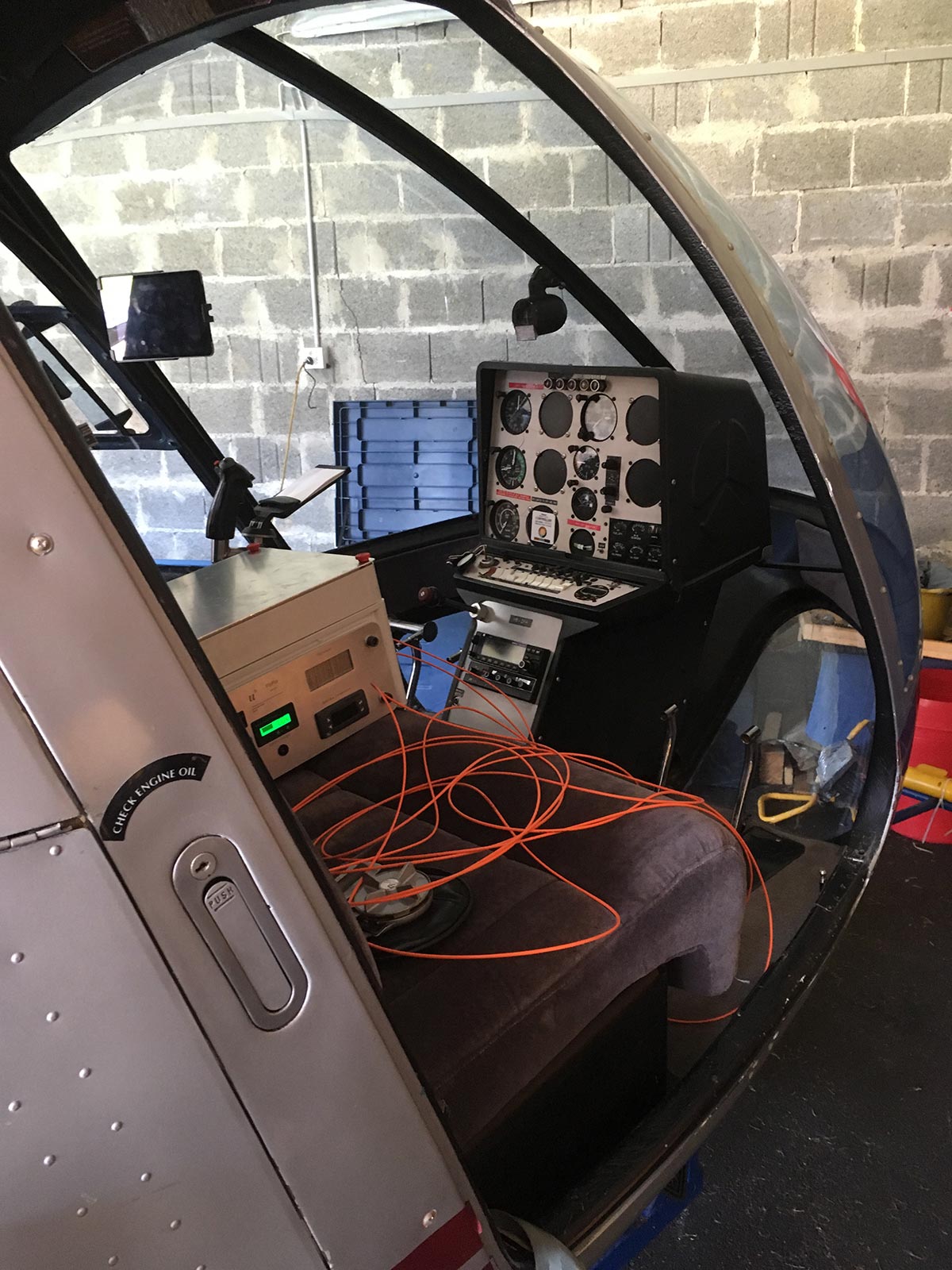
Credit: Courtesy of Lucas Patty.
It could be a milestone on the path to detecting life on other planets: Scientists under the leadership of the University of Bern and of the National Centre of Competence in Research (NCCR) PlanetS detect a key molecular property of all living organisms from a helicopter flying several kilometers above ground.Credit: Lucas Patty.
Credit: Courtesy of Lucas Patty.
As part of the MERMOZ project (see info box below), an international team led by the University of Bern and the National Centre of Competence in Research NCCR PlanetS, has now succeeded in detecting this signature from a distance of 2 kilometers and at a velocity of 70 kph.Similar spirals of light are not produced by abiotic non-living nature,†says the first author of the study Lucas Patty, who is a MERMOZ postdoctoral researcher at the University of Bern and member of the NCCR PlanetS.
“Just 4 years ago, we could detect the signal only from a very close distance, around 20 cm, and needed to observe the same spot for several minutes to do so,†as Lucas Patty recalls.
Credit: © ESO, Astronomy & Astrophysics, Lucas Patty.
Lucas Patty, NCCR PlanetS, Pysics Institute, University of Bern.
Credit: Courtesy of Lucas Patty.
This step will be decisive to enable the search for life in and beyond our Solar System using polarization,“ says MERMOZ principal investigator and co-author Brice-Olivier Demory, professor of astrophysics at the University of Bern and member of the NCCR PlanetS says.
Brice-Olivier Demory, Center for Space and Habitability and NCCR PlanetS, University of Bern.
Lucas Patty explains: “Because the signal directly relates to the molecular composition of life and thus its functioning, it can also offer valuable complementary information in Earth remote sensing.†It can for instance provide information about deforestation or plant disease.
The project’s feasibility study is funded by the Centre for Space and Habitability (CSH) and the NCCR PlanetS.
In 2014, the Swiss National Science Foundation awarded the University of Bern the National Centre for Competence in Research (NCCR) PlanetS, which it manages together with the University of Geneva.Since its involvement in the first moon landing in 1969, the University of Bern has been participating in space missions of the major space organizations, such as ESA, NASA, ROSCOSMOS and JAXA.It is currently co-leading the European Space Agency’s (ESA) CHEOPS mission with the University of Geneva.
With the discovery of the first exoplanet, the University of Geneva positioned itself as one of the leading institutions in the field.ETH Zurich and the University of Zurich are also partner institutions in the NCCR PlanetS.Scientists from the fields of Astrophysics, Data Processing and Earth Sciences lead projects and make important contributions to NCCR PlanetS research.
The NCCR PlanetS is organized into the following research areas:.
Johannes Geiss and his team from the Physics Institute of the University of Bern, was the first great highlight in the history of Bernese space exploration.
The University of Bern has been participating in space missions of the major space organizations, such as ESA, NASA, ROSCOSMOS and JAXAG
It is currently co-leading the European Space Agency’s (ESA) CHEOPS mission with the University of Geneva.
The successful work of the Department of Space Research and Planetary Sciences (WP) from the Physics Institute of the University of Bern was consolidated by the foundation of a university competence center, the Center for Space and Habitability (CSH)HThe Swiss National Fund also awarded the University of Bern the National Center of Competence in Research (NCCR) PlanetS, which it manages together with the University of Geneva.
